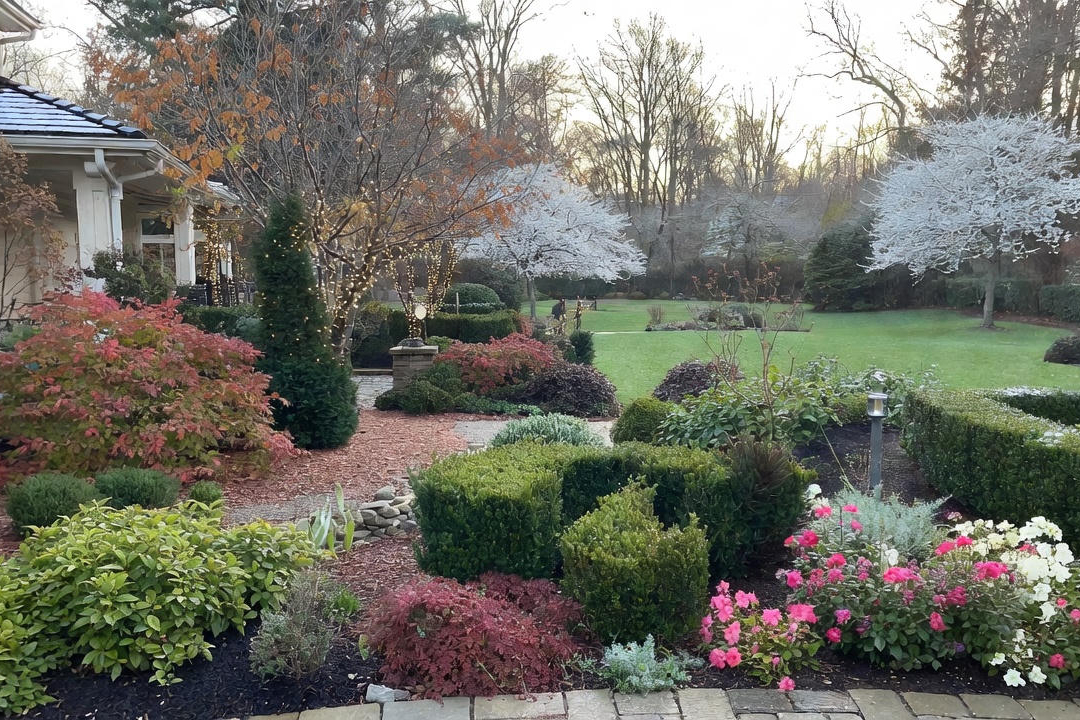
Climbing plants cover structures in basically one of three ways: clinging, scrambling, or twining. Clinging plants like Virginia creeper and Boston ivy are often referred to as “true climbers” as they literally stick to structures using little suction cups on their tendrils. Other clinging plants such as climbing hydrangea and English ivy use aerial rootlets to get a foothold onto a trellis.
However, when it comes to flowering climbing plants, they are typically found in the scrambling or twining categories.

Scrambling Climbers
Roses, plumbago, and bougainvillea are prostrate shrubs and good examples of scrambling plants. Scramblers are better described as leaners, as they don’t climb on their own. That said, this group is adept at scrambling up and over walls often cascading dramatically down the other side. Some leaners such as roses, have thorns that act as a hook, which prevents them from sliding backwards on their journey upward. Scrambling climbers need a mechanical support such as a trellis, arch, fence, etc. Gardeners should expect to tie the canes to their support as the plants grow, as well as performing annual pruning.
Twining (Tendril) Climbers
Twining plants make their way up supports by either using twining stems or curly leaf tendrils called petioles (side shoots off stems). Sweet pea, morning glory, clematis, Black-eyed-Susan vine, passionflower, cup-and-saucer vine, wisteria, and honeysuckle are good examples of flowering twining plants. All the gardener needs to do for this group is provide support and the plants do the rest.

20 Flowering Climbers
Here are twenty of the most beautiful and popular climbing plants for the home landscape. When looking for the right plant for a particular spot, be sure to look at the plant’s sun requirements, as they can vary greatly. Remember that the zones listed on the tag refers to if the plant will survive the winter and return the following year (as a perennial). Many of these climbers are grown as annual plants in any zone.
1. Black-eyed Susan vine (Thunbergia alata) – Zones 10-11, full sun to partial shade
2. Bleeding Heart vine (Clerodendrum thomsonia) – Zones 10-12, partial shade
3. Bougainvillea (Bougainvillea spp.) – Zones 9-11, full sun to partial shade
4. Cape honeysuckle (Tacoma capensis) – Zones 9-11, full sun to partial shade
5. Chocolate vine (Akebia quinata) -- Zones 5-9, full sun to full shade
6. Clematis (Clematis spp.) -- Zones 4-11, full sun to partial shade
7. Climbing hydrangea (Hydrangea anomala spp. Petiolaris) -- Zones 5-9, partial shade to full shade
8. Climbing roses (Rosa spp.) – Zones 5-11, full sun to partial shade
9. Corkscrew vine (Vigna caracalla) – Zones 9-11, full sun
10. Cup-and-Saucer vine (Cobaea scandens) – Zones 9-11, full sun
11. Mandevilla (Mandevilla spp.) – Zones 9-11, full sun
12. Moonflower (Ipomea alba) – Zones 10-12, full sun
13. Morning glory (Ipomoea tricolor or purpurea) – Grow as an annual, full sun
14. Passionflower (Passiflora incarnata) – Zones 5-9, full sun to partial shade
15. Plumbago (Plumbago auriculata) – Zones 8-11, full sun to partial shade
16. Snail vine (Cochleasnathus caracalla) – Zones 9-11, full sun to partial shade
17. Star jasmine (Trachelospermum jasminoides) – Zones 8-10, full sun to partial shade
18. Sweet Potato vine (Ipomoea batatas) -- Zones 9-11, full sun
19. Trumpet vine (Campsis radicans) – Zones 4-9, full sun to partial shade
20. Wisteria (Wisteria spp.) -- Zones 5-9, full sun
Download iScape on the App Store or Google Play Store to create beautiful designs with endless possibilities. So simple, so easy. iScape it!




ds.jpg)
.jpg)
